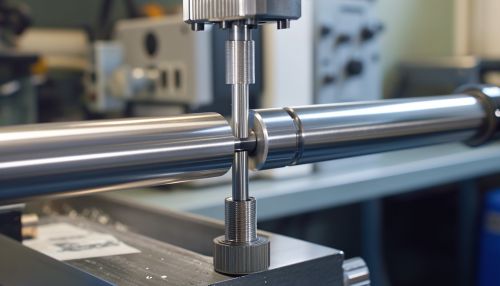Elastic Modulus
Introduction
The Elastic Modulus, also known as modulus of elasticity, is a measure of the stiffness of a material. It is an inherent property of the material and is a fundamental concept in the field of materials science, mechanical engineering, and civil engineering. The elastic modulus is defined as the ratio of stress, which is the force per unit area applied to a material, to the strain, which is the deformation or displacement caused by the stress. This concept is central to understanding the behavior of materials under load and is used in the design and analysis of structures and materials.


Types of Elastic Modulus
There are several types of elastic modulus, each of which measures the material's response to different kinds of stress:
1. Young's Modulus (read more): This is the most commonly used elastic modulus and measures the material's resistance to linear stress (tension or compression). It is named after the British scientist Thomas Young.
2. Shear Modulus (read more): Also known as the modulus of rigidity, this measures the material's resistance to shear stress, which is a force that causes layers of the material to slide against each other.
3. Bulk Modulus (read more): This measures the material's resistance to uniform pressure in all directions, or volumetric stress.
Determination of Elastic Modulus
The elastic modulus of a material can be determined through various testing methods, such as tensile testing, compressive testing, and shear testing. These tests involve applying a known force to a material and measuring the resulting deformation. The elastic modulus is then calculated as the ratio of the applied stress to the resulting strain.
Factors Affecting Elastic Modulus
The elastic modulus of a material is influenced by several factors:
1. Material Composition: The atomic structure and bonding of a material significantly impact its elastic modulus. For example, metals typically have high elastic moduli due to their strong metallic bonds.
2. Temperature: The elastic modulus of a material can change with temperature. Generally, the modulus decreases with increasing temperature.
3. Impurities and Defects: Impurities and defects in the material can also affect the elastic modulus. For instance, the presence of alloying elements in metals can alter their elastic properties.
Applications of Elastic Modulus
The elastic modulus is a critical parameter in many engineering applications. It is used in the design and analysis of structures and materials to predict their behavior under load. For example, in civil engineering, the elastic modulus is used in the design of buildings, bridges, and other structures to ensure they can withstand the applied loads. In materials science, the elastic modulus is used to select materials for specific applications based on their mechanical properties.
